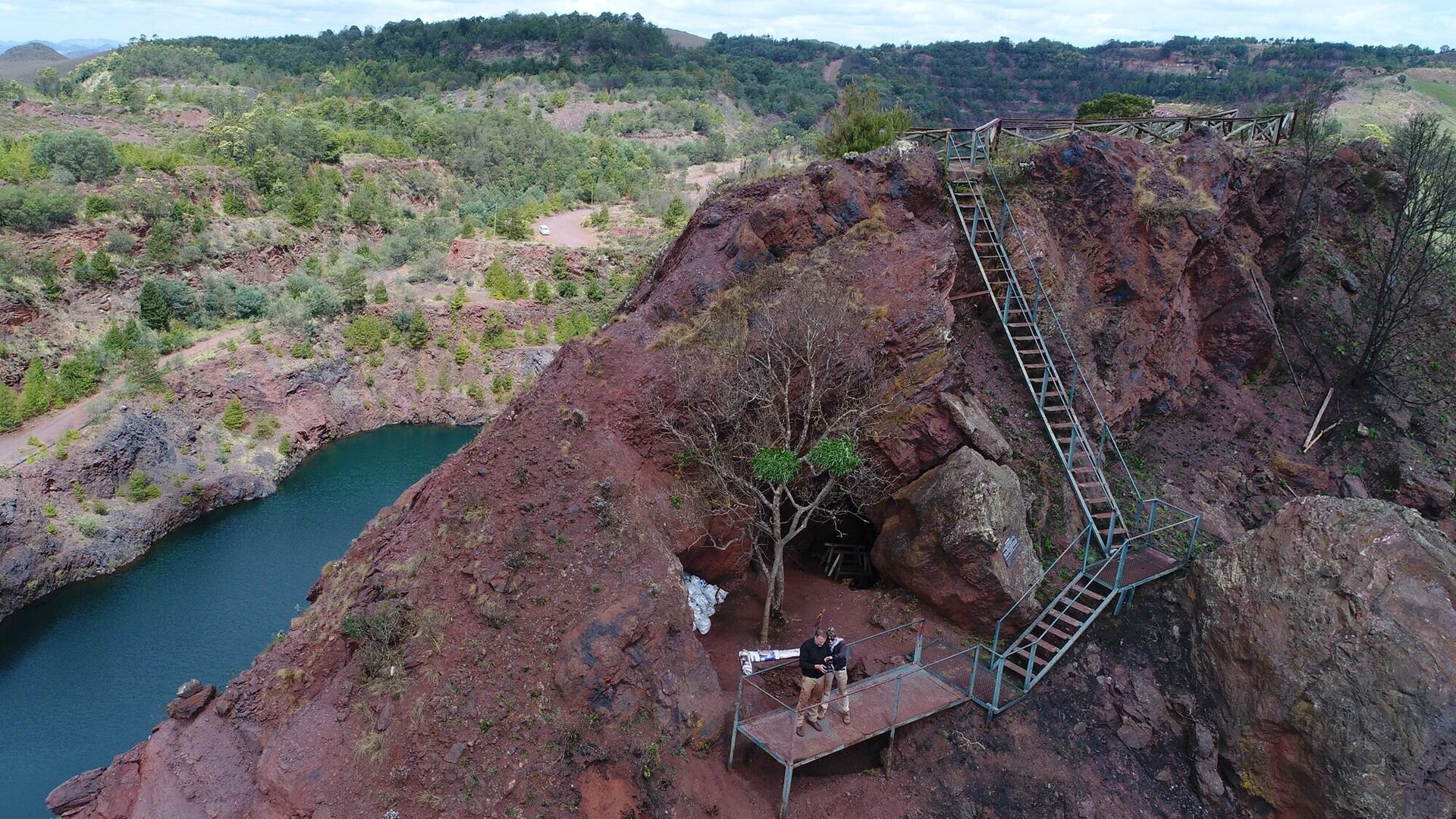https://en.sputniknews.africa/20241101/worlds-oldest-ochre-mine-uncovered-in-eswatini-with-advanced-technology-dating-back-40000-years-1068976466.html
World's Oldest Ochre Mine Uncovered in Eswatini With Advanced Technology, Dating Back 40,000 Years
World's Oldest Ochre Mine Uncovered in Eswatini With Advanced Technology, Dating Back 40,000 Years
Sputnik Africa
Ochre, a naturally occurring iron-rich pigment, has been essential for thousands of years in cave paintings, symbolic objects, and other forms of early human... 01.11.2024, Sputnik Africa
2024-11-01T11:06+0100
2024-11-01T11:06+0100
2024-11-01T13:16+0100
eswatini (swaziland)
southern africa
sub-saharan africa
science
culture
civilization
archeology
technology
research
history
https://cdn1.img.sputniknews.africa/img/07e8/0b/01/1068976920_0:104:2000:1229_1920x0_80_0_0_5209c359c2272d34bc2387ac5fe08f37.jpg
A team led by University of Missouri researcher Brandi L. MacDonald has discovered the world’s oldest ochre mine, dating back 40,000 years in Eswatini.By leveraging advanced facilities at the University of Missouri—including the Mizzou Research Reactor (MURR), Materials Science and Engineering Institute (MSEI), and the Electron Microscopy Core (EMC)—researchers have mapped how ochre from this site was mined and distributed to surrounding communities.This comparison helped scientists “anchor human activities in time” and understand the development of cognition and social networks in early human communities. Through neutron activation analysis and other high-tech processes at MURR, researchers created a “geochemical signature” to identify the origin and distribution of ochre artifacts, crucial for understanding ancient trade and cultural practices.Samples from Eswatini's Lion Cavern underwent further examination with advanced Raman spectroscopy at MSEI and imaging tools at the EMC, revealing the unique chemical structures within the ochre.This meticulous approach revealed new insights into the methods early humans used to mine, transport, and use ochre, deepening our understanding of Stone Age societies and their creative expression.
https://en.sputniknews.africa/20240924/discovery-of-ancient-african-farming-society-sheds-light-on-stone-age-history-1068405073.html
eswatini (swaziland)
southern africa
Sputnik Africa
feedback@sputniknews.com
+74956456601
MIA „Rossiya Segodnya“
2024
Christina Glazkova
https://cdn1.img.sputniknews.africa/img/07e7/0b/07/1063380906_0:0:673:674_100x100_80_0_0_79628b4d0cd9f29291a57aa13bbf9e7a.jpg
Christina Glazkova
https://cdn1.img.sputniknews.africa/img/07e7/0b/07/1063380906_0:0:673:674_100x100_80_0_0_79628b4d0cd9f29291a57aa13bbf9e7a.jpg
News
en_EN
Sputnik Africa
feedback@sputniknews.com
+74956456601
MIA „Rossiya Segodnya“
Sputnik Africa
feedback@sputniknews.com
+74956456601
MIA „Rossiya Segodnya“
Christina Glazkova
https://cdn1.img.sputniknews.africa/img/07e7/0b/07/1063380906_0:0:673:674_100x100_80_0_0_79628b4d0cd9f29291a57aa13bbf9e7a.jpg
eswatini (swaziland), southern africa, science, culture, civilization, archeology, technology, research, history
eswatini (swaziland), southern africa, science, culture, civilization, archeology, technology, research, history
World's Oldest Ochre Mine Uncovered in Eswatini With Advanced Technology, Dating Back 40,000 Years
11:06 01.11.2024 (Updated: 13:16 01.11.2024) Christina Glazkova
Writer / Editor
Ochre, a naturally occurring iron-rich pigment, has been essential for thousands of years in cave paintings, symbolic objects, and other forms of early human expression, providing rich insights into the evolution of human societies.
A team led by University of Missouri researcher Brandi L. MacDonald has
discovered the world’s oldest ochre mine, dating back 40,000 years in Eswatini.
By leveraging advanced facilities at the University of Missouri—including the Mizzou Research Reactor (MURR), Materials Science and Engineering Institute (MSEI), and the Electron Microscopy Core (EMC)—researchers have mapped how ochre from this site was
mined and distributed to surrounding communities.
"By comparing the ochre sources with places where people lived, exchanged, and used those ochres between 2,000 and 40,000 years ago, we can see how their choice of raw materials changed over long periods of time," MacDonald explained.
This comparison helped
scientists “anchor human activities in time” and understand the development of cognition and social networks in early human communities. Through neutron activation analysis and other high-tech processes at MURR, researchers created a “geochemical signature” to identify the origin and distribution of ochre artifacts, crucial for understanding ancient trade and cultural practices.
Samples from Eswatini's Lion Cavern underwent further examination with advanced Raman spectroscopy at MSEI and imaging tools at the EMC, revealing the unique chemical structures within the ochre.
This meticulous approach revealed new
insights into the methods early humans used to mine, transport, and use ochre, deepening our understanding of Stone Age societies and their creative expression.



